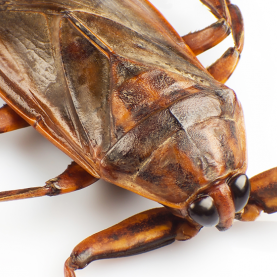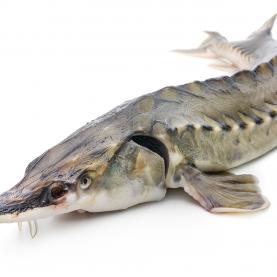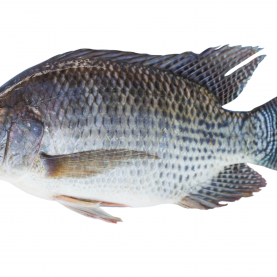Crayfish
The crayfish is a crustacean with five pairs of legs. It looks and tastes somewhat like lobster. In Europe, some species belonging to the 'crayfish' family are now regarded as invasive and harmful to water quality and biodiversity. As a result, it is strongly encouraged to catch these shellfish to consume their exquisite flesh.
Articles
Association Theutoise pour l’Environnement asbl. Les écrevisses indigènes et exotiques en Région wallonne. Disponible sur le site : http://www.aspei.be/documentation/EcrevissesBrochure.pdf, consulté le 28.04.2016.
TOURON Emmanuel, 2013. Magasine La Nouvelle République.fr, actualité du 03.10.2013, L’écrevisse de Louisiane partie pour tout détruire. Disponible sur le site : http://www.lanouvellerepublique.fr/Deux-Sevres/Actualite/Environnement/n/Contenus/Articles/2013/10/03/L-ecrevisse-de-Louisiane-partie-pour-tout-detruire-1635491, consulté le 28.04.2016.
TOURON Emmanuel, 2013. Magasine La Nouvelle République.fr, actualité du 05.10.2013, L’écrevisse de Louisiane : et si on les mangeait ? Disponible sur le site : http://www.lanouvellerepublique.fr/Deux-Sevres/Communautes-NR/n/Contenus/Articles/2013/10/05/Ecrevisses-de-Louisiane-et-si-on-les-mangeait-1638141, consulté le 28.04.2016.
BEDA, Claude, 2015. E-journal 24 heures, L’écrevisse, « homard du lac ». Disponible sur le site : http://www.24heures.ch/series-ete/ecrevisse-homard-lac/story/21704452, consulté le 28.04.2016.
BOISMARTEL, Maxime, POMMERET, Pierre, 2011. Fédérations Lorraine Pêche, Guide d’identification des écrevisses en France Métropolitaine. Disponible sur le site : http://www.bourgogne-nature.fr/fichiers/guide-d-identification-des-ecrevisses-en-france-metropolitaine_1376296060.pdf, consulté le 28.04.2016.
MORIN, Richard, (2003). « Élevage de l’écrevisse ». Document d’information DADD-21. Ministère de l’Agriculture, des Pêcheries et de l’Alimentation. 7 p. http://www.mapaq.gouv.qc.ca/Fr/Peche, consulté le 28.04.2016.
LaNutrition.fr, Ecrevisse. Disponible sur le site : http://www.lanutrition.fr/fraliment/fraliment/2743-ecrevisse.html, consulté le 28.04.2016.
McCLAIN, W.R., ROMAIRE R.P. 2007, Cultured Aquatic Species Information Programme. Procambarus clarkii. In: FAO Fisheries and Aquaculture Department [online]. Rome. Updated 13 January 2007. [Consulté le 24.08.2016]. Disponible à l’adresse : http://www.fao.org/fishery/culturedspecies/Procambarus_clarkii/en
Invasion
The term crayfish refers to several species of freshwater crustaceans that resemble small lobsters.
These crustaceans can be found almost everywhere around the world. Particularly voracious and invasive exotic species, originally from the Pacific and Atlantic oceans, are gradually damaging water quality and biodiversity in Europe. In addition, they reach sexual maturity earlier than native European crayfish, they reproduce more frequently and are hardier.
Fishing and farming
Crayfish farming, known as astaciculture, is not widespread. Some regions and countries, such as China and the US, farm crayfish and even offer training and courses on breeding such crustaceans. Fishing various North American varieties is now strongly encouraged and subject to very few restrictions. Since this species is invasive, it does not need to be farmed in Europe.
A very hardy crustacean
Crayfish are crustaceans belonging to the Astacoidea superfamily. They do not have an internal skeleton, but are encased in an exoskeleton that protects the body. The first part comprises the head with a pair of antennae. The second includes the thorax with three pairs of 'jaw-legs' and two additional pairs of legs by which crayfish move. The third part consists of the abdomen, ending in the tail.
Crayfish are generally more active at night, devouring almost everything in their path, from molluscs to fish eggs, insects and younger members of their own species. They can reach 200 g in weight, with a maximum length of 20 cm.
Mating periods, spawning and incubation times vary depending on the species of crayfish, but the mating process is similar. Depending on the species, age and size, female crayfish each lay between 50 and 600 eggs, which evolve into embryos and then into larvae that cling to the abdomen of the female for a few days.
Crayfish have many predators, mostly fish such as trout, perch, pike or monkfish. They also serve as prey for some birds, such as herons and ducks, and also for mammals, such as otters, musk rats, and... human beings. Moreover, some species (including native species of Western Europe) are more susceptible to viruses, fungi and other parasitic worms.
Of the over 470 species of crayfish found around the world, only three are native species in Western Europe. There are very few restrictions on fishing, and consumption of American species is strongly encouraged.
Once in the kitchen, crayfish can be prepared like shrimp, with garlic, parsley, shallots, and broth, or dipped in mayonnaise, to accompany lemon rice for example.
Articles
ASBL | Association Theutoise pour l’Environnement. Les écrevisses indigènes et exotiques en Région wallonne [en ligne]. [Consulté le 28 avril 2016]. Disponible à l’adresse : http://www.aspei.be/documentation/EcrevissesBrochure.pdf
TOURON, Emmanuel, 2013. L’écrevisse de Louisiane partie pour tout détruire. La Nouvelle République.fr [en ligne]. 03 octobre 2013. [Consulté le 28 avril 2016]. Disponible à l’adresse : http://www.lanouvellerepublique.fr/Deux-Sevres/Actualite/Environnement/n/Contenus/Articles/2013/10/03/L-ecrevisse-de-Louisiane-partie-pour-tout-detruire-1635491
TOURON, Emmanuel, 2013. L’écrevisse de Louisiane : et si on les mangeait ? La Nouvelle République.fr [en ligne]. 05 octobre 2013. [Consulté le 28 avril 2016]. Disponible à l’adresse : http://www.lanouvellerepublique.fr/Deux-Sevres/Communautes-NR/n/Contenus/Articles/2013/10/05/Ecrevisses-de-Louisiane-et-si-on-les-mangeait-1638141
BEDA, Claude, 2015. L’écrevisse, « homard du lac ». 24 heures [en ligne]. [Consulté le 28 avril 2016].13 juillet 2015. Disponible à l’adresse : http://www.24heures.ch/series-ete/ecrevisse-homard-lac/story/21704452
BOISMARTEL, Maxime, POMMERET, Pierre, 2011. Guide d’identification des écrevisses en France Métropolitaine. Fédérations Lorraine Pêche [en ligne]. [Consulté le 28 avril 2016]. Disponible à l’adresse : http://www.bourgogne-nature.fr/fichiers/guide-d-identification-des-ecrevisses-en-france-metropolitaine_1376296060.pdf
MORIN, Richard, 2003. Élevage de l’écrevisse. Document d’information DADD-21. Ministère de l’Agriculture, des Pêcheries et de l’Alimentation [en ligne]. [Consulté le 28 avril 2016]. Disponible à l’adresse : http://www.mapaq.gouv.qc.ca/Fr/Peche
LaNutrition.fr, s.d. Écrevisse [en ligne]. [Consulté le 28 avril 2016]. Disponible à l’adresse : http://www.lanutrition.fr/fraliment/fraliment/2743-ecrevisse.html
McCLAIN, W.R., ROMAIRE R.P. 2007, Cultured Aquatic Species Information Programme. Procambarus clarkii. In: FAO Fisheries and Aquaculture Department [online]. Rome. Updated 13 January 2007. [Consulté le 24.08.2016]. Disponible à l’adresse : http://www.fao.org/fishery/culturedspecies/Procambarus_clarkii/en







